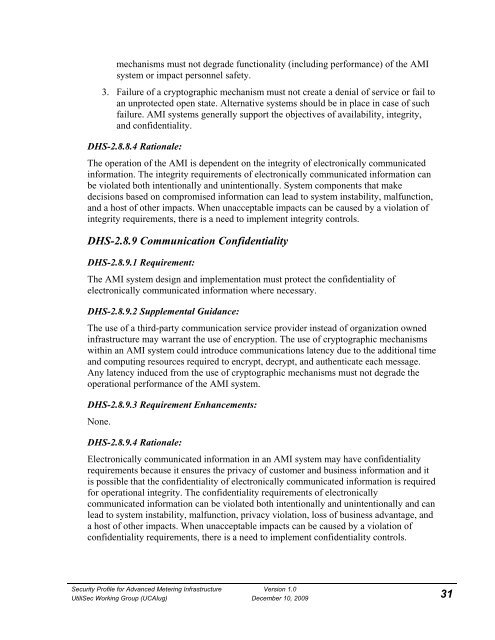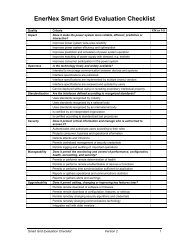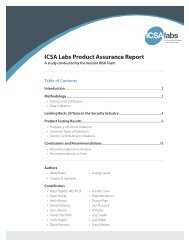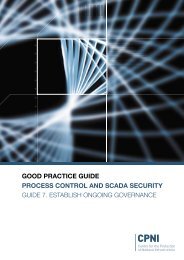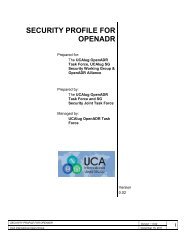Security Profile for Advanced Metering Infrastructure - Open Smart ...
Security Profile for Advanced Metering Infrastructure - Open Smart ...
Security Profile for Advanced Metering Infrastructure - Open Smart ...
You also want an ePaper? Increase the reach of your titles
YUMPU automatically turns print PDFs into web optimized ePapers that Google loves.
mechanisms must not degrade functionality (including per<strong>for</strong>mance) of the AMI<br />
system or impact personnel safety.<br />
3. Failure of a cryptographic mechanism must not create a denial of service or fail to<br />
an unprotected open state. Alternative systems should be in place in case of such<br />
failure. AMI systems generally support the objectives of availability, integrity,<br />
and confidentiality.<br />
DHS-2.8.8.4 Rationale:<br />
The operation of the AMI is dependent on the integrity of electronically communicated<br />
in<strong>for</strong>mation. The integrity requirements of electronically communicated in<strong>for</strong>mation can<br />
be violated both intentionally and unintentionally. System components that make<br />
decisions based on compromised in<strong>for</strong>mation can lead to system instability, malfunction,<br />
and a host of other impacts. When unacceptable impacts can be caused by a violation of<br />
integrity requirements, there is a need to implement integrity controls.<br />
DHS-2.8.9 Communication Confidentiality<br />
DHS-2.8.9.1 Requirement:<br />
The AMI system design and implementation must protect the confidentiality of<br />
electronically communicated in<strong>for</strong>mation where necessary.<br />
DHS-2.8.9.2 Supplemental Guidance:<br />
The use of a third-party communication service provider instead of organization owned<br />
infrastructure may warrant the use of encryption. The use of cryptographic mechanisms<br />
within an AMI system could introduce communications latency due to the additional time<br />
and computing resources required to encrypt, decrypt, and authenticate each message.<br />
Any latency induced from the use of cryptographic mechanisms must not degrade the<br />
operational per<strong>for</strong>mance of the AMI system.<br />
DHS-2.8.9.3 Requirement Enhancements:<br />
None.<br />
DHS-2.8.9.4 Rationale:<br />
Electronically communicated in<strong>for</strong>mation in an AMI system may have confidentiality<br />
requirements because it ensures the privacy of customer and business in<strong>for</strong>mation and it<br />
is possible that the confidentiality of electronically communicated in<strong>for</strong>mation is required<br />
<strong>for</strong> operational integrity. The confidentiality requirements of electronically<br />
communicated in<strong>for</strong>mation can be violated both intentionally and unintentionally and can<br />
lead to system instability, malfunction, privacy violation, loss of business advantage, and<br />
a host of other impacts. When unacceptable impacts can be caused by a violation of<br />
confidentiality requirements, there is a need to implement confidentiality controls.<br />
<strong>Security</strong> <strong>Profile</strong> <strong>for</strong> <strong>Advanced</strong> <strong>Metering</strong> <strong>Infrastructure</strong> Version 1.0<br />
UtiliSec Working Group (UCAIug) December 10, 2009<br />
31


